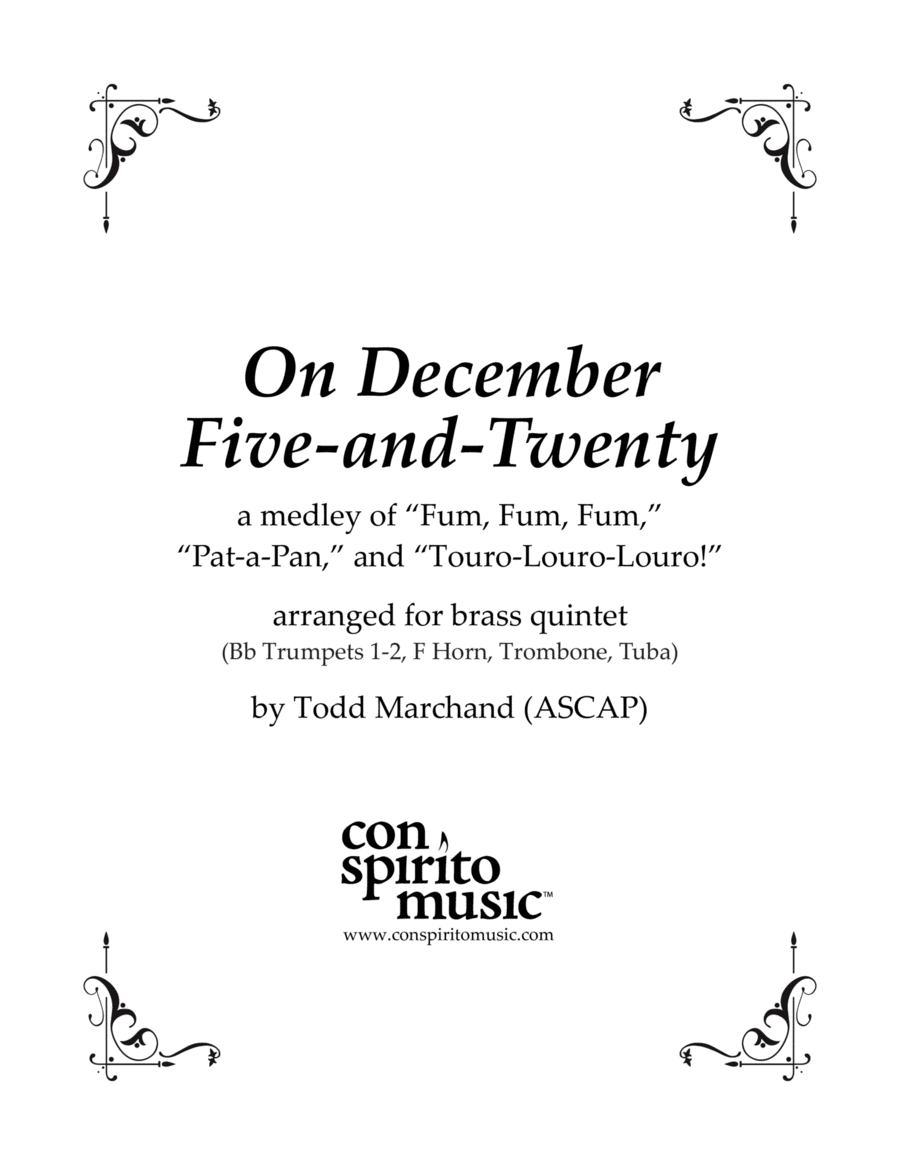Brass Ensemble Horn,Trombone,Trumpet,Tuba - Level 4 - Digital Download SKU: A0.726032 Composed by Traditional. Arranged by Todd Marchand. Christmas,Folk. Score and parts. 17 pages. Con Spirito Music #2958109. Published by Con Spirito Music (A0.726032). âOn December Five-and-Twentyâ brings together three folk tunes from different regions of Europe. The first, âFum, Fum, Fum,â is a Catalan carol from northeastern Spain. The second, âPat-a-Pan,â comes from the Burgundy region of east-central France. The third, âTouro-Louro-Louro!â comes from the Provence region of southeastern France.Each tune bears an onomatopoetic title (a word that phonetically imitates or suggests the source of the sound that it describes): The refrain âfum, fum, fumâ in the Catalan carol is an onomatopoeia for the strumming of a guitar. âPat-a-panâ â the title of the Burgundian carol â imitates the sound of a drum being struck. âTouro-louro-louro!â â the title of the Provencal carol â suggests the singing of birds. (A similar onomatopoeia, âturelurelu,â appears in âPat-a-Pan,â suggesting the sound of a fife, or flute, being played.)This is a delightful arrangement that is enjoyable to play and pleasing to listeners. ©Copyright 2014 Todd Marchand / Con Spirito Music. Visit www.conspiritomusic.com
